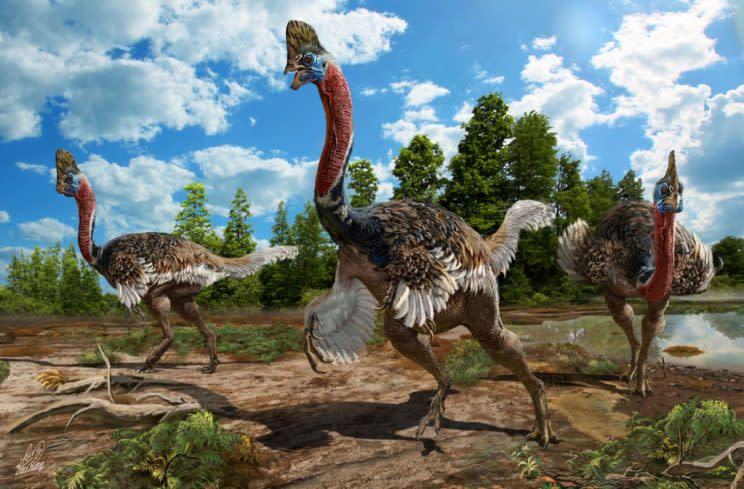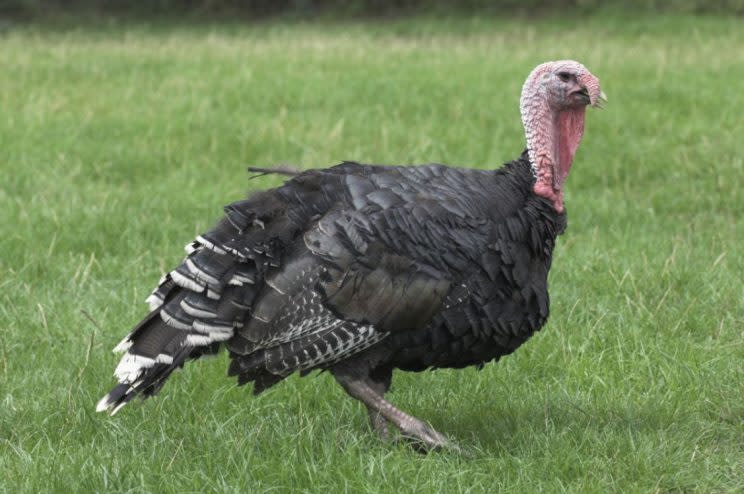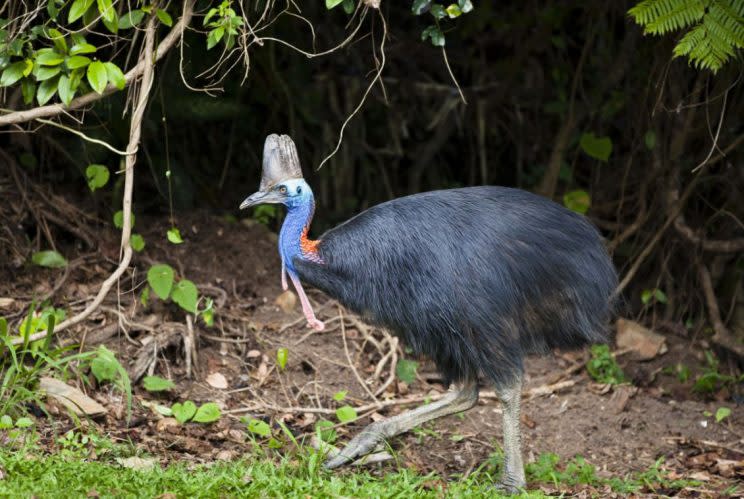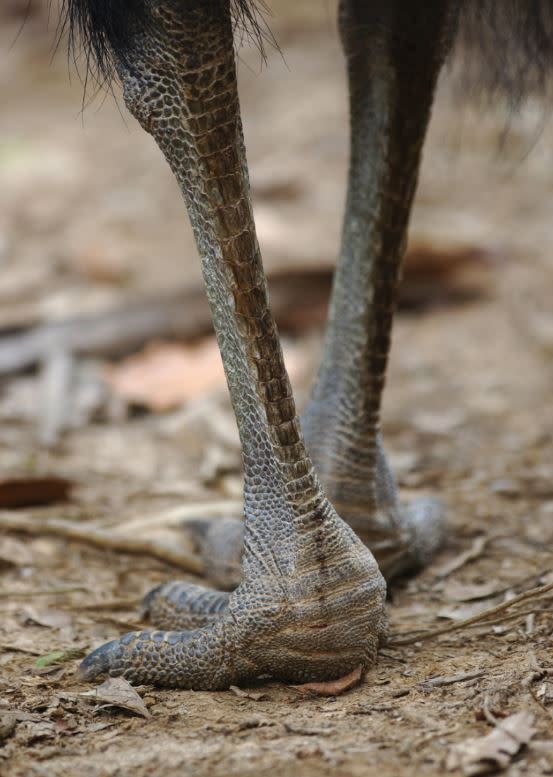New species of dinosaur found in China - and it looks like a turkey

A new species of dinosaur bearing more than a passing resemblance to a turkey has been found in China.
Known as a Corythoraptor jacobi, the flesh eating winged creature roamed Earth at the same time as the T-Rex, standing about 10 feet tall on its hind legs and weighing about 37 stone.
A colourful beast with a blue face and unusually long, pink flamingo-style neck, this dino also had huge, razor-sharp claws and a stout but powerful toothless beak that ripped smaller animals apart.

It lived during the Late Cretaceous, between 100 and 66 million years ago, and was at least eight years old when it died in early adulthood.
The almost complete skeleton of Corythoraptor jacobi, including its skull and jaw, was unearthed at a construction site in Ganzhou, southern China.
The creature’s most striking feature was its pointed helmet, similar to the crest or ‘casque’ on the head of the cassowary – a flightless Australian bird related to emus and ostriches.
It is believed the crest of Corythoraptor served the same purpose as that of modern cassowaries – for fighting and sex.

Palaeontologist Professor Lu, of the Chinese Academy of Geological Sciences, Beijing, who led the study, said: “The cassowary-like crest in the skull is similar to the casque of cassowaries, which serves a sociosexual role and functions in visual and acoustic display.
“It is therefore reasonable to assume that the cassowary-like crest of Corythoraptor jacobsi was probably utilised in a similar way.
“The sharp claw and long neck of Corythoraptor jacobsi may also indicate its living behaviour is perhaps similar to the modern flightless cassowary.”
The almost complete remains of the Corythoraptor, which means “cassowary-like crest”, are housed at Jinzhou Paleontological Museum in Liaoning Province.
MOST POPULAR ON YAHOO UK:
Inside the world’s most expensive RV, which costs £2.3m and is seriously luxurious
Grenfell Tower covered in protective wrapping to shield ‘open coffin’ from view
Cash-strapped Brits ‘having to choose between food and basic personal hygiene’
Councils may REMOVE speed bumps under government plans to tackle air pollution
Anti-Semitic incidents in Britain hit an all-time high
The two-legged animal, described in journal Scientific Reports, belongs to a family of feathered dinosaurs called oviraptorosaurs.
These are characterised by their short, toothless heads and sharp beaks. They ranged from turkey-sized to 25 feet long. Others also had crests of bone on their head.
Fossil discoveries in recent decades suggest the group was experiencing a population boom, diversifying into new species, during the 15 million years before an asteroid slammed into the coast of Mexico – wiping out all the non-bird dinosaurs.
Professor Lu added: “Corythoraptor jacobsi represents the first oviraptorid dinosaur with a highly developed cassowary-like skull crest from China.”
The cassowary is the world’s second biggest bird – and the most dangerous. If threatened it will attack with a swift karate kick with its powerful legs equipped with dagger-like claws.

The shy, solitary animal lives in the rainforests of northern Queensland, where only 1,200 remain in the wild.
Corythoraptor is the seventh oviraptorosaur to be discovered in Ganzhou, a small city in one of the poorest parts of the country, alone.
Prof Lu said: “The discovery of Corythoraptor jacobsi provides unprecedented evidence oviraptorid dinosaurs were morphologically and taxonomically far more diverse in the Ganzhou area than in any other known region of the world.”
Top image: SWNS



